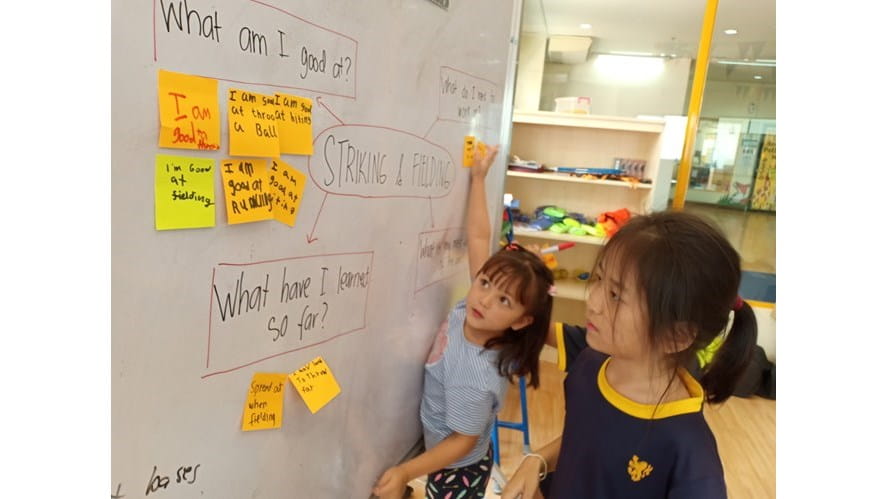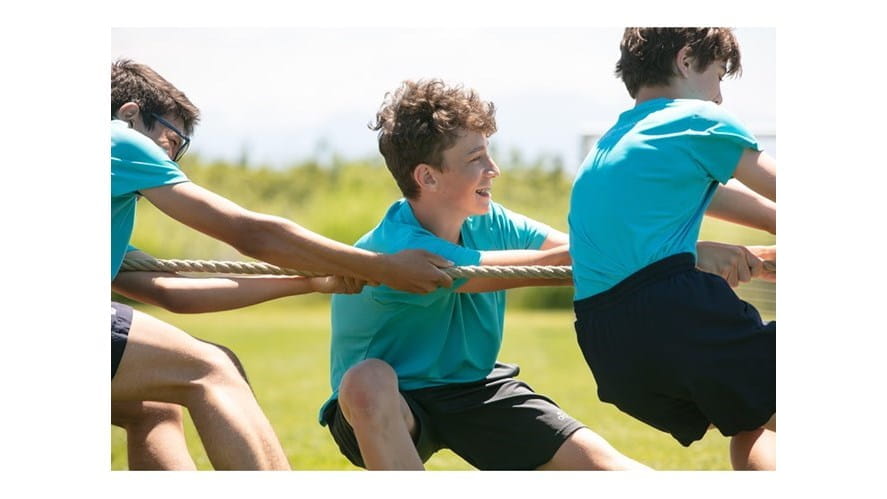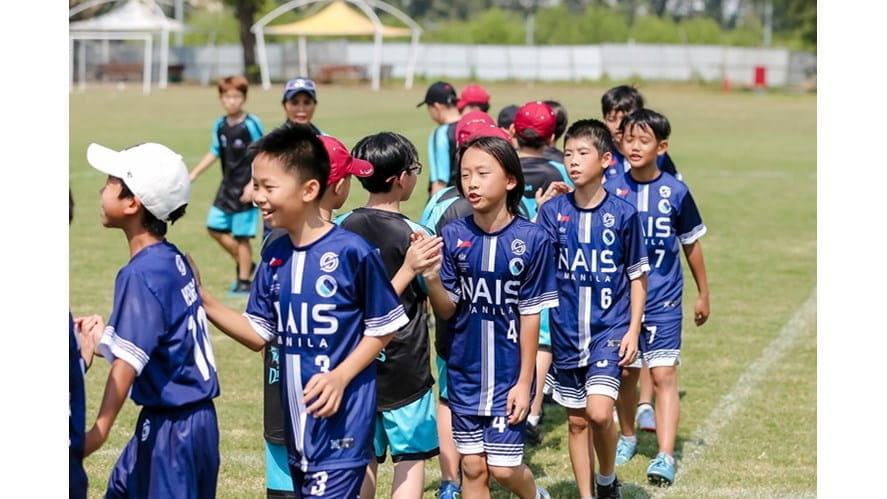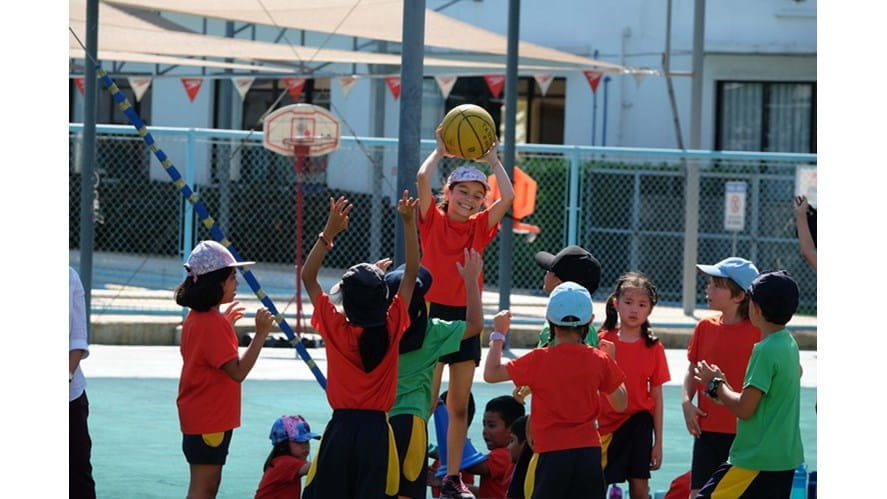P.E. DEPARTMENT FEATURE: Fostering Reflective Thinking in Striking and Fielding Lessons One cannot discuss ‘Reflective Thinking’ thoroughly without first defining ‘self-reflection.’
One cannot discuss ‘Reflective Thinking’ thoroughly without first defining ‘self-reflection.’
When kids are asked at the beginning of P.E. lessons what they think ‘self-reflection’ is, they often answer “Its looking back and thinking how we’ve done certain things in the previous activities.”
‘Self-reflection’ is the capacity of humans to exercise introspection and to attempt to learn more about their fundamental nature and essence." (sourced from Wikipedia)
As lessons progressed, students have realized that ‘self-reflection’ is more than just looking back and rethinking what they have done. In P.E. lessons, students are being asked questions that guide them to reflect in depth on their skills application during games and on their roles and responsibilities as a member of a team.
There are 5 different ‘Reflection Activities’ we have done so far that you will read more about below.
Different forms of ‘reflective activities’ in P.E.
Reflection practice is not a ‘one size fits all’ type of activity. Each student is unique and responds differently to the type of reflection activities in class.
There are two major types of ‘reflective practice’ according to Donald Schon (a famous proponent of reflective practice). These are reflection-in-action and reflection-on-action.
Reflection-in-action is thinking, revising and acting at any point during the lesson to resolve issues or to solve existing problems.
On the other hand, reflection-on-action is trying to make sense of previous performance, the choices they made during games and is usually being done at the end of the lesson.
We have done 5 different ways of reflecting during PE lessons. These are ACT, WRITE, READ, FEEL and TELL. While some might respond through oral interaction, others will respond better through writing or action.
ACT..
This falls under ‘reflection-in-action.’ In T-ball, being able to think, reevaluate and reconsider actions during games are essential to one's success. The nature of the game is very technical because there are many rules involved which students must base their decisions on.
To help students develop this type of reflective thinking skills, I would stop the lesson in the middle of the game and throw questions before moving on to the next play. Reflective questions help students to reevaluate their previous decisions, come up with a better solution to the problem and respond effectively to new challenges. For instance, a fielder who knows the offensive situation (e.g. runner on first base, bases loaded etc.) during the game will be able to think in advance, plan ahead and react to the situation prior to the ball being hit by the batter.
In Striking and Fielding lessons, students are constantly being asked questions during and after games to develop their reflection-in-action skills. Examples of general reflective questions are: What worked well for me? What didn’t work well? What can I do to make my skill/performance better? How can I be a better teammate? How can I lead my group effectively?
Examples of game-specific reflective questions are: What made you decide to throw the ball to the third baseman instead of throwing it to first baseman? How will you react when the ball goes to you in a ‘bases are loaded’ situation? When do you tag runners and when do you mark the base?
WRITE..
PE Reflection Sheet activity is a reflection-on-action (students trying to make sense of their previous performance and the choices they made).
Students were asked to fill in the comments field with their reflective statements on ‘PE Reflection Sheet’ and discuss their answers with their partners. This is a less intimidating way to draw answers from students who would not usually speak in front of the class, but have great insights and reflection to share. This type of activity helps students to identify areas for change and improvement, and discussing with a partner provides different perspectives.
READ…
Students were asked to write their answers on sticky notes and place it under the question they tried to answer. They were given a chance to answer as many questions as they can.
The primary students enjoyed it very much that we ran out of sticky notes at the end of the activity.
After posting answers on the whiteboard, each one of them were given ample time to read through all the posts and to relate what they read to their own learning. After reading, they were asked which information or answer on the board they found similar and/or different from their personal experience and if they learned anything new from their classmates’ answers.
By going through answers on the board they were able to relate new knowledge to prior understanding.
FEEL..
This method is more suitable for years 1-3. At the end of each P.E. lesson, students are asked how they feel about a specific activity, how they feel about their overall performance, and their effort level. Students are randomly selected to write the first letter of their name under the ‘self-assessment’ continuum. They were asked to explain why their answers are leaning towards happy or sad face.
This type of reflection allows students to measure progress in a more positive way, to celebrate small successes and to increase self-awareness.
TELL..
Small group discussion in between and after all games played is common in P.E. lessons. Each time a team has just finished fielding, they were given time to reflect on how they performed as a group/individual when fielding and how they will plan their batting order for striking. They are constantly engaged and taking an active part in the lesson.
Reflecting together develops questioning skills and at the same time provides different types of learning perspectives.
In dialogue, students have the opportunity to share their learning experience and any adjustments they made to improve their overall performance. Students are welcome to ask questions to their teachers and classmates to seek clarification on information that was unclear to them.
Being able to reflect is an essential life skill
The overall goal of developing reflective thinking skills in P.E. lessons is personal growth.
Different reflective activities in P.E. are being used as tools to cultivate critical thinking, problem solving, decision making, independent learning, causal reasoning, strategic thinking and better communication skills.
Reflective thinking skills go beyond lessons and are transferable into different aspects of student's life such that even after they have finished school, they are able to continually evolve as a person and better themselves as lifelong learners.
Ms. Rachel De Guzman
P.E. Teacher





